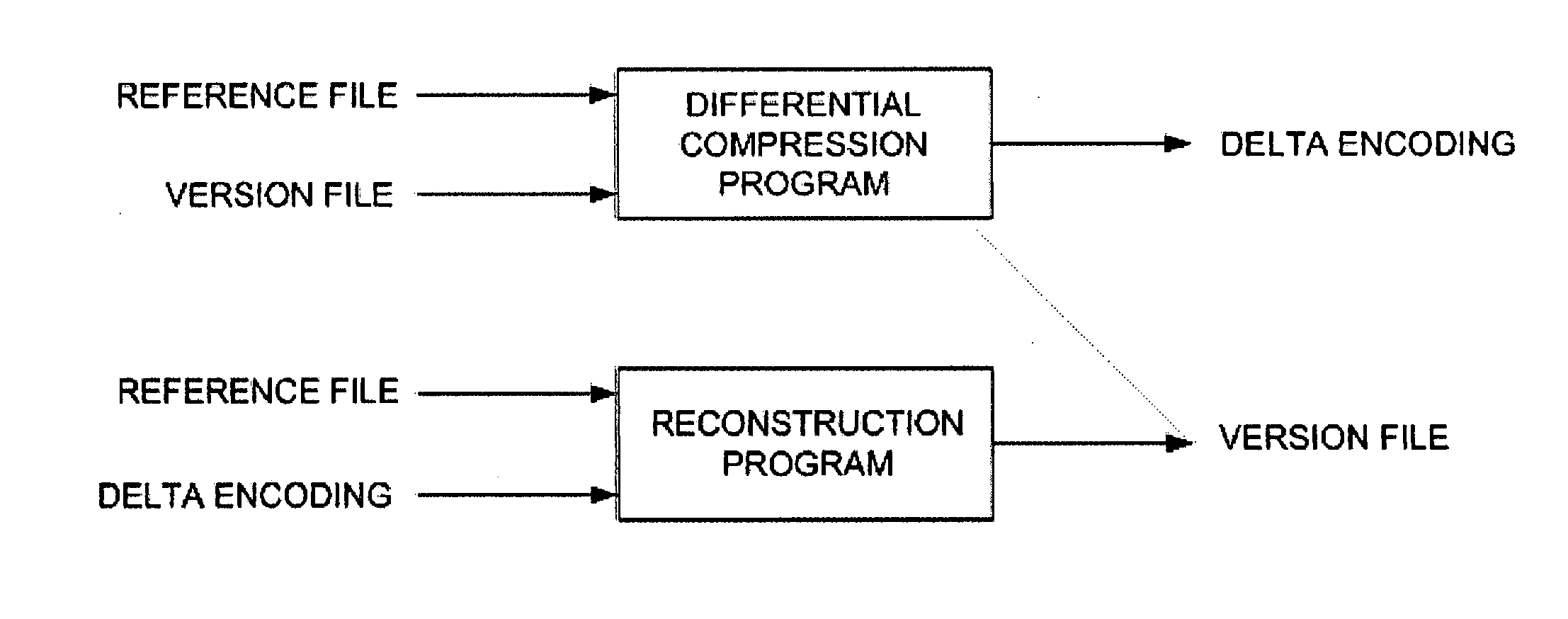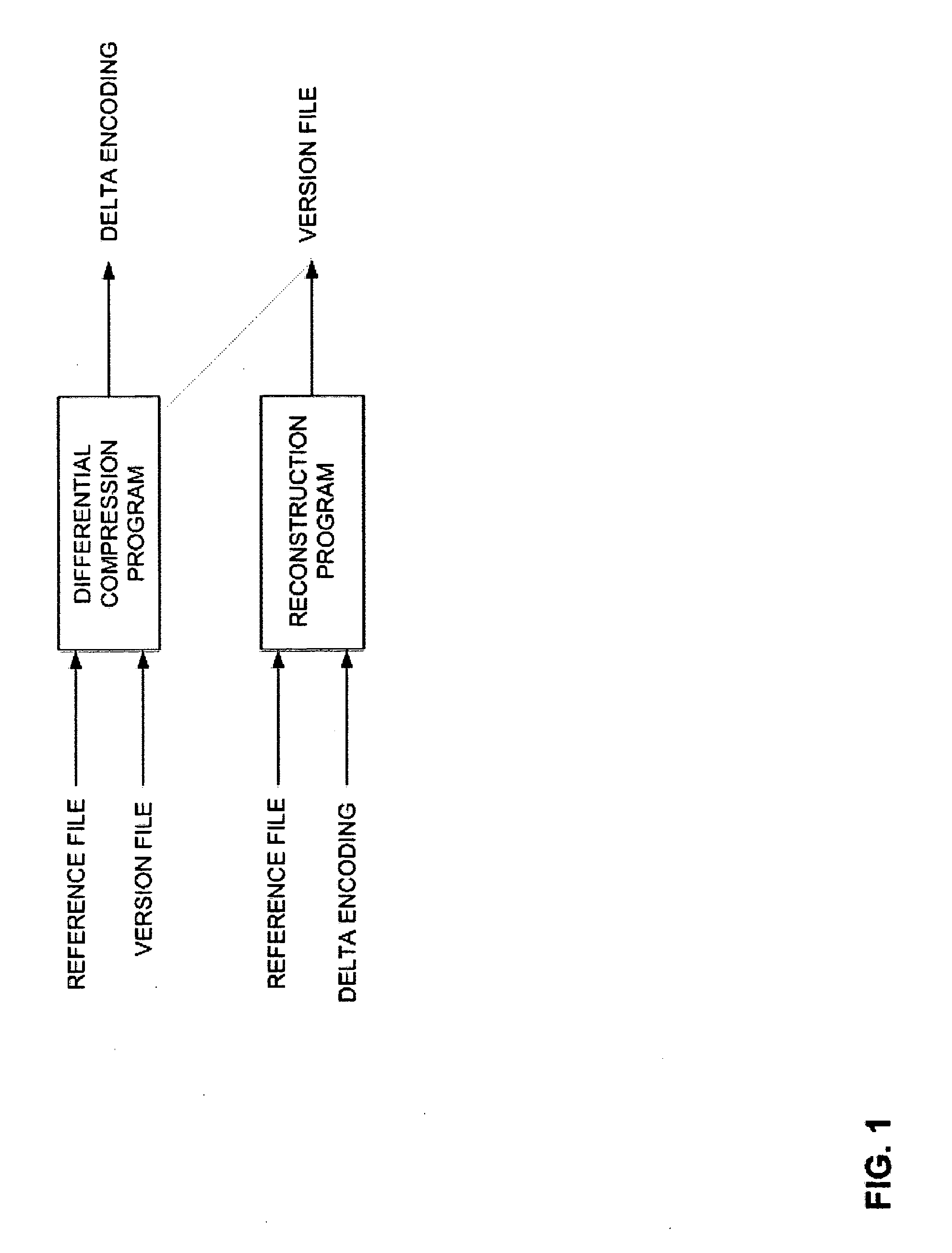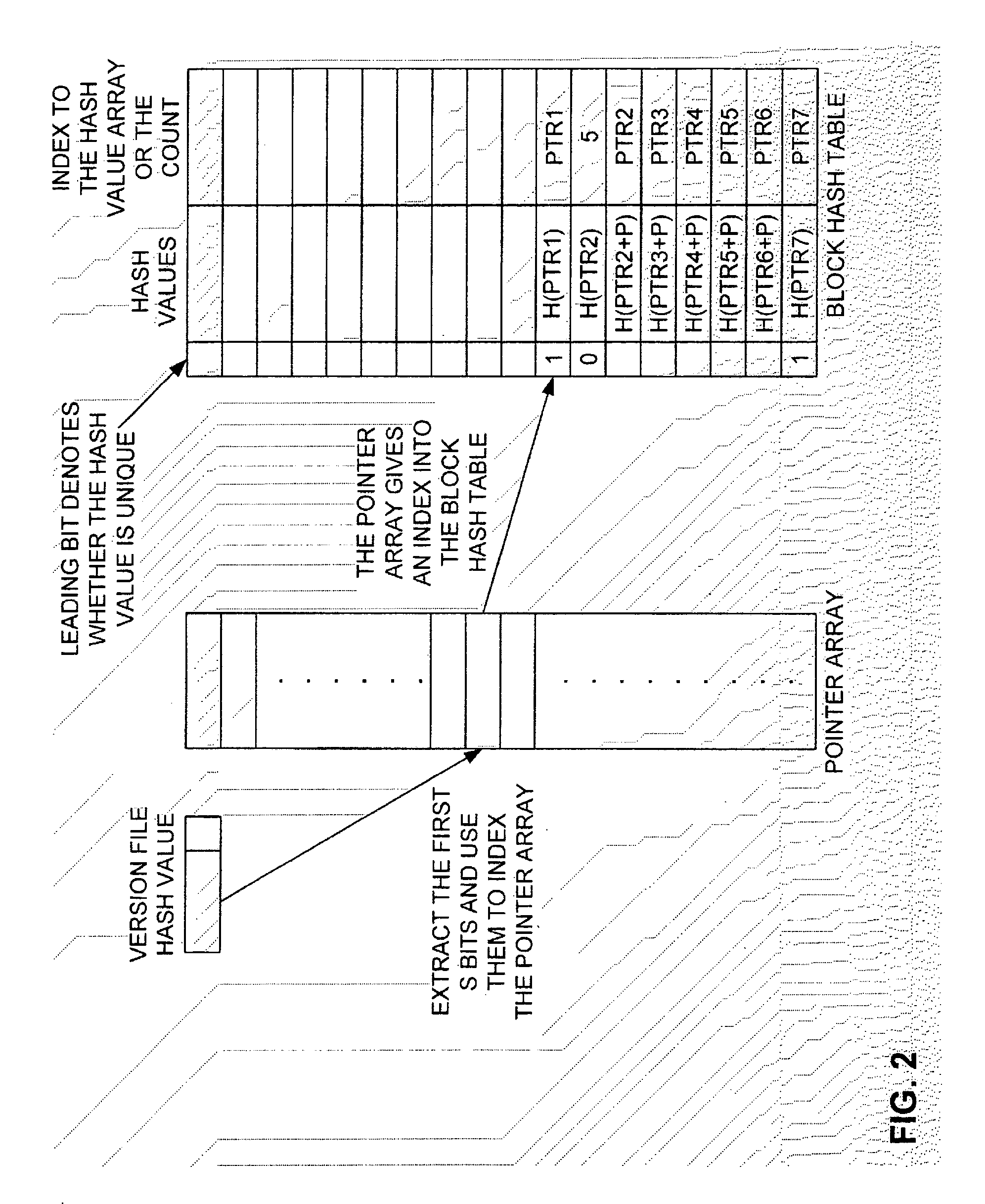Method and Computer Program Product for Finding the Longest Common Subsequences Between Files with Applications to Differential Compression
a technology of differential compression and common subsequences, applied in the direction of digital transmission, securing communication, electrical equipment, etc., can solve the problems of not being able to solve the problem of a large number of files, not being able to solve the problem of a large number of differential compression tasks, and operating at a very high granularity, so as to improve i/o performance.
- Summary
- Abstract
- Description
- Claims
- Application Information
AI Technical Summary
Benefits of technology
Problems solved by technology
Method used
Image
Examples
case 1
[0096] ci[n]=cj[n]→cin−1cj. Thus after the nth pass, ci appears before cj in the partially sorted array. In the (n+1)th pass of the algorithm ci and cj are to be placed in the same bucket. However, in the (n+1)th pass of the algorithm, ci is encountered before cj and it is placed in the bucket before cj. Thus ci appears before cj after the (n+1 )th pass is complete.
case 2
[0097] ci[n]i[n]. This means on the (n+1)th pass, ci is to be placed in a bucket of smaller value than cj. Thus ci appears before cj after the (n+1 )th pass is complete.
case 3
[0098] Now consider the case where ci=ncj. The (n+1)th pass of the algorithm seeks to place ci and cj in the same bucket. After the nth pass of the algorithm, if there are values ck are between ci and cj in the partially sorted array, this means ci=n−1ck=n−1cj for all such ck. Thus when this array is sequentially processed in the (n+1)th pass, ci is placed in the bucket corresponding to its nth byte, the ck are placed in the bucket corresponding to their nth byte, and cj is placed in the bucket corresponding to its nth byte. Hence if there are values between ci and cj after the (n+1 )th pass of the algorithm, they must equal ci and cj in the lowest n order bytes.
[0099] A.2 Suffix Array Construction Algorithm
[0100] At the start of the suffix array construction algorithm, the invention calls the four-byte integer-sort routine described in FIG. 6. At the end of this process, if the hash values are distinct then the suffix array is formed. If the hash values are not distinct, for each...
PUM
 Login to View More
Login to View More Abstract
Description
Claims
Application Information
 Login to View More
Login to View More - R&D
- Intellectual Property
- Life Sciences
- Materials
- Tech Scout
- Unparalleled Data Quality
- Higher Quality Content
- 60% Fewer Hallucinations
Browse by: Latest US Patents, China's latest patents, Technical Efficacy Thesaurus, Application Domain, Technology Topic, Popular Technical Reports.
© 2025 PatSnap. All rights reserved.Legal|Privacy policy|Modern Slavery Act Transparency Statement|Sitemap|About US| Contact US: help@patsnap.com



